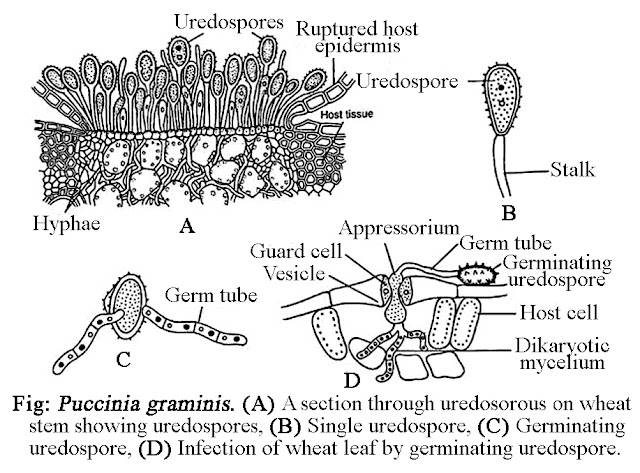APIACEAE
1. SYSTEMATIC
POSITION:
Bentham
& Hooker
Division: Phanerogames (Seed Plants)
Class:
Dicotyledones
Sub-class: Polypetalae
Series:
Calyciflorae
Order:
Umbellales
Family:
Apiaceae (Umbelliferae)
2. MORPHOLOGICAL
CHARACTERS:
Habit
– Mostly annual or perennial herbs, aromatic.
Leaves
– Alternate, simple or usually much dissected, often exstipulate.
Inflorescence
– Simple or compound umbell.
Flower
– Bisexual, actinomorphic, epigynous with a disc.
Calyx
– Sepals 5, united, toothed.
Corolla
– Petals 5, free, often unequal, valvate or imbricate.
Androecium
– Stamens 5, free, anthers versatile.
Gynoecium
– Carpels 3, syncarpous, ovary inferior, 2-locular with 1 ovule in each
locule, placentation parietal, style 2, stigma capitates, surrounded by
two-lobed honey-disc (stylopodium).
Fruit
– Cremocarp, dehiscing into two dry segments (mericarps) which are
suspended from the slenderbiforked axis (carpophores), each mericarp is
provided with longitudinal ridges (costae or jugar) and between two ridges are
furrows (valleculae) which are traversed by oil-ducts (vitae).
3. FLORAL
FORMULA:
4. COMPARATIVE SYSTEMATIC POSITION AND AFFINITIES:
Bentham &
Hooker/ Engler & Prantl placed the family Apiaceae under the order order
Umbellales/ Umbelliflorae along with Araliaceae and Coronaceae. Hutchinson put
this family in the monotypic order Umbellales.
The
family Apiaceae throws some light on the origin of sympetalous advanced
families like Rubiaceae and Asteraceae. This view is proved on the fact that in
both Apiaceae and Rubiaceae there is tendency of flowers to be aggregated into
umbellate heads, reduction of calyx lobes, epigyny, etc. Bessey supports this
view and postulated that the Apiaceae was directly derived from Rosaceae.
Apiaceae in turn give rise to Rubiaceae.
5. ECONOMIC IMPORTANCE:
1. The seeds of Trachyspermum
ami yields jowan from which Aqua ptychotis is manufactured. The mericarp of
Foeniculum vulgare is used as
condiment. The mericarp of Coriandrum
sativum is used as condiment for cooking purpose. Fruit of Carum carvi is used as condiment for
cooking purpose.
2. The root of Daucus carota and
Apium graveolens (Carrot) is used as vegetable.
3. The resinous exudations of the
young buds and roots of Ferula asiatica
are used as ‘asafoetida’ or ‘hingh’ of commerce.
4. The whole plant of Centella asiatica is used as medicine.
The fruit of Carum carvi is used as
medicine in stomach ache and carminative.
*************




Comments
Post a Comment